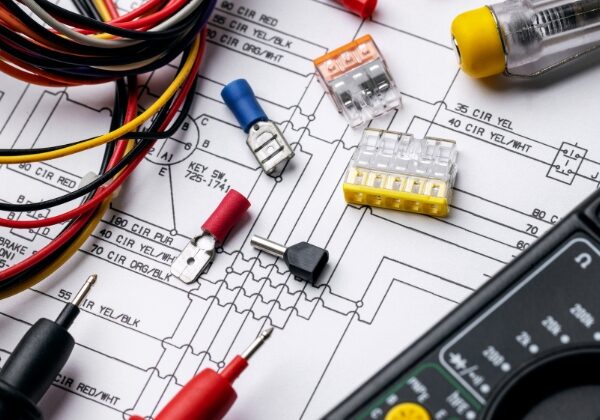
The roof stands as a crucial element in safeguarding your home, serving not only as a prominent feature in its exterior aesthetics but also as a vital shield against the elements. When in optimal condition, it regulates temperature, keeping your home comfortable in varying weather conditions. Conversely, a compromised roof can give rise to persistent issues, further structural damage, and vulnerability to the elements. Swift and expert repairs are imperative in such cases, underscoring the importance of entrusting the task to a reputable roofing company. To steer clear of potential pitfalls, it is essential to choose the best roofing sheets for house from a skilled roofer with a commendable track record, thus avoiding the ten common roofing mistakes that could compromise the integrity of your home.
The Most Common Roofing Mistakes
Managing roofing repairs or replacements requires a specific level of knowledge to guarantee that the work is completed correctly. Understanding common roofing faults, similar to conveying symptoms to a mechanic, enables homeowners to communicate with roofers more efficiently. Without a fundamental understanding of roofing complexities, one may unintentionally ignore important elements and fall to disinformation. Similar to an uneducated car owner, an uninformed homeowner may not receive an in-depth evaluation of their roofing issues.
To ensure the finest service and quality work, it’s essential to become familiar with possible hazards. This knowledge not only helps to identify scams but also transforms homeowners into informed consumers who can actively participate in talks with their roofing contractors. As the phrase goes, a little information may go a long way, especially when it comes to safeguarding what’s above us.
1. Incorrect Roofing Selection for Ridges
Because of the high exposure to weather elements in these places, choosing the right roofing materials for your roof’s angles and ridges is essential. Ridges are subjected to the strongest winds and are always vulnerable. Specialized roofing built for these areas is thicker and more durable than standard roofing, giving better protection. Failure to install these precise roofing may cause premature leaks, endangering the overall integrity of your roof.
2. Incorrect Flashing Installation
The proper placement of flashing is vital to the overall functionality of your roof. Typically made of sheet metal, flashing has been strategically placed in valleys where two slopes meet, around dormers, and on structures like chimneys. When installed incorrectly, flashing fails to protect these fragile regions, resulting in potential leaks and damage to the lower sections of the roof, as well as the attic. To keep your roof’s protective barrier effective, you must ensure correct flashing placement.
3. Ignoring the installation of a cricket for chimneys
Failure to include a cricket while roofing around a chimney might result in water gathering behind it. The cricket, a little V-shaped ridge, is vital for diverting water away from the chimney. Without this critical component, the gap between the chimney and the roof experiences additional stress, increasing the danger of leaks.
4. Poor execution of the starter course
Incorrect installation of the starter course, the first row of roofing at the roof’s edge, increases the chance of leaks. The edge of the roof is particularly susceptible to water penetration, making a properly double-layered starter course crucial. Roofing on the beginning course should be staggered to improve water resistance. Failure to follow these instructions during installation increases the risk of water leakage, underlining the need for exact execution in this crucial roofing component.
5. Incorrect Fastener Length
Using too short nails to secure roofing compromises the stability of your roof. This error not only allows for potential roof shifting but also raises the possibility of early roof replacement and repair. To avoid such problems, make sure that the nails used are long enough to go deep into the deck. This approach efficiently reduces roof displacement while also ensuring long-term structural integrity.
6. Inaccurate Nail Placement
Beyond fastener length, nail location is vital for maintaining your roof’s overall strength. Improper nail placement might cause severe structural difficulties. All nails must be hidden beneath the top layer of roofing to prevent exposure to harmful factors including the sun, wind, and moisture. This preventative step helps to prevent corrosion, prevents holes in the roofing material, and prolongs the life of your roof.
7. Inadequate Attic Ventilation: Preserving Roof Health
Insufficient attic ventilation stands as a prevalent roofing mistake with potential repercussions for your roof’s well-being. Excessive heat or moisture buildup in the attic can harm the underside of your roof. Many older homes lack proper ventilation, underscoring the importance of addressing this aspect during roof repairs or replacements. Adhering to current building codes, which recommend one square foot of vent space per 150 square feet of attic floor, ensures optimal performance. A balanced distribution of vent space between intake and exhaust venting is essential, and an experienced roofer can assess and enhance ventilation to prevent premature aging of your roof.
8. Inconsistent Slate Coloring: A Concern for Slate Roofs
The uniformity of color of slates chosen over conventional roof slates becomes an important consideration in this scenario. The roofer must verify each piece of slate, even if it originated from the same supplier, before installation. Color differences may be identified despite having only one source. To avoid a visually unattractive result, assess the uniformity of slate shading while the substance is still on the ground. Color mismatches on the roof can impair the overall appearance and harmony of the slate, which is why thorough pre-installation inspections and selection are required.
9. Absence of Leak Barriers: Fortifying Against Potential Leaks
Overlooking the installation of leak barriers in vulnerable areas of the roof is a critical mistake. Leak barriers create a watertight seal in high-risk zones, such as slopes meeting, roof edges, and roof penetrations like chimneys and skylights. Some roofers may skip this step to expedite the process or cut costs, but the absence of leak barriers can lead to serious water damage. It is imperative to inquire about and ensure the installation of leak barriers in key areas to fortify your roof against potential leaks.
10. Neglecting Drip Edge: An Important Protective Option
While not mandatory in all situations, a drip edge serves as a valuable protective option for your roof. This additional flashing along the roof’s edges directs water away from the fascia, preventing potential damage. Particularly useful in areas prone to high winds and rain, a drip edge acts as insurance against future issues. One of the most typical errors made is skipping the drip edge, but homeowners should discuss its appropriateness with their roofing professionals, bearing in mind that it may have advantages due, among other things, to the signs of foundation damage.
Conclusion
The only way to achieve the best roofing sheet in India is by entrusting the task to experienced and trained professionals. Do good research and identify the best team that has a proven history of the highest quality in providing top-notch roofing materials according to the market requirements.
Read To Know: Choose The Right Website Maintenance Company for Your Website











